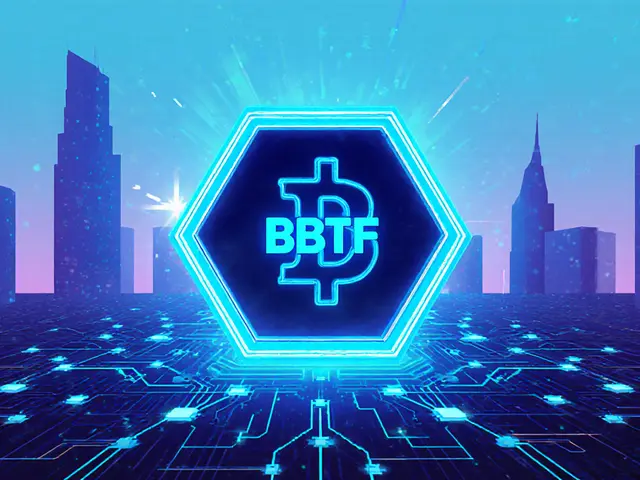Crypto Exchange Compliance Checker
Check Exchange Compliance Status
Enter the name of a cryptocurrency exchange to see if it is registered with FIU-IND and compliant with Indian regulations.
Compliant vs Non-Compliant Exchanges (as of Oct 2025)
| Exchange | Status | Regulatory Compliance |
|---|---|---|
| WazirX | Compliant | FIU-IND registered, PMLA compliant |
| CoinDCX | Compliant | FIU-IND registered, PMLA compliant |
| ZebPay | Compliant | FIU-IND registered, PMLA compliant |
| Binance | Non-Compliant | Not registered, subject to takedown notices |
| Bybit | Non-Compliant | Not registered, subject to takedown notices |
| BitMex | Non-Compliant | Not registered, subject to takedown notices |
When it comes to crypto exchange restrictions in India is a regulatory measure that limits how Indian citizens can access offshore cryptocurrency platforms. The limits stem from notices issued by the Financial Intelligence Unit - India (FIU‑IND) to non‑compliant exchanges and require registration under the Prevention of Money Laundering Act., the landscape feels like a moving target. One day a platform is open, the next day its app disappears from the Play Store. This article breaks down why the rules exist, which exchanges are affected, what you must do to stay safe, and how the tax regime fits into the puzzle.
Key Takeaways
- FIU‑IND issued notices to 25 offshore exchanges onOct12025 for violating the PMLA.
- Cryptocurrency is not banned in India, but every exchange serving Indian users must register as a VDASP.
- Trades are taxed at a flat30% plus1% TDS on every transfer.
- Non‑registered platforms are blocked at the URL and app level; using a VPN can breach local law.
- Compliant Indian exchanges still face liquidity gaps compared with global giants.
Why the crackdown started
Back in 2020 the Supreme Court overturned the RBI’s banking ban, opening the door for crypto activity. But the government soon realized that without oversight, illicit money could flow unchecked. The Financial Intelligence Unit - India (FIU‑IND) is the country's anti‑money‑laundering watchdog began issuing show‑cause notices in 2023, targeting big names like Binance and Bybit. The October2025 round is a continuation: 25 platforms, including Huione, Paxful, and BitMex, received formal notices for not registering under the Prevention of Money Laundering Act (PMLA) the 2002 law that forces financial entities to report suspicious transactions.
Who must register and what registration means
Any Virtual Digital Asset Service Provider (VDA SP a crypto exchange, wallet, or any service that lets users move, convert, or hold digital assets) that offers services to Indian residents has to file with FIU‑IND. Registration is activity‑based, not location‑based, meaning an offshore company can still be a reporting entity if it serves Indian users.
The registration checklist includes:
- Submit a detailed KYC framework for all users.
- Implement AML transaction monitoring that flags patterns defined by the PMLA.
- Maintain records for at least five years and share them with FIU‑IND on request.
- Appoint a compliance officer who is an Indian resident.
About 50 VDASPs have completed this process as of October2025. Those that haven’t seen their URLs and mobile‑app listings removed from Indian app stores and search engines.
What the tax rules look like
The Ministry of Finance slapped a flat30% tax on any profit from crypto sales, plus a 1% Tax Deducted at Source (TDS) on every transfer, regardless of whether the trade was profitable. The 1% TDS is collected at the point of transaction and can be claimed as a credit when filing the annual return. For a trader moving₹1lakh worth of Bitcoin, the TDS bite is₹1,000, and any capital gain is taxed at 30%.
Because the tax is flat, there’s no distinction between short‑term and long‑term gains, unlike equity markets. The tax authority also requires a separate schedule for crypto assets in the income tax return, making record‑keeping essential.
How the restrictions affect everyday users
Imagine you’ve been using an offshore exchange to get better liquidity. After Oct12025, the app disappears from the Play Store, the website shows a “blocked in your region” page, and any attempt to log in via a VPN could be flagged as non‑compliant activity. In practice, most Indian users shift to compliant platforms such as WazirX, CoinDCX, or ZebPay-exchanges that have completed FIU‑IND registration.
These home‑grown platforms generally have lower liquidity, higher spreads, and fewer trading pairs compared with Binance or KuCoin. That means you might pay a bit more to buy a coin or find it harder to sell large amounts quickly. On the flip side, compliant platforms give you legal protection: your funds stay within a framework that can be audited, and you avoid potential penalties for using a blocked service.

Comparison: Compliant vs Non‑compliant Exchanges (as of Oct2025)
| Feature | Registered Indian Exchanges | Blocked Offshore Exchanges |
|---|---|---|
| Regulatory status | FIU‑IND registered, PMLA compliant | Not registered, subject to takedown notices |
| App availability | Google Play & Apple App Store | Removed from Indian app stores |
| Liquidity depth | Moderate - limited order‑book size | High - global order books |
| Trading pairs | Major coins + selected altcoins | Hundreds of altcoins |
| Tax handling | Integrated 30% tax + 1% TDS reporting | Self‑reporting required, risk of non‑compliance |
| Legal risk | Low - compliant with Indian law | High - possible penalties for accessing blocked services |
Regulatory bodies you’ll hear about
Several agencies shape the crypto scene in India:
- Reserve Bank of India (RBI) the central bank that issues warnings about crypto volatility and is working on a sovereign digital rupee.
- Ministry of Finance oversees tax policy and the draft bill that could ban private cryptocurrencies.
- Securities and Exchange Board of India (SEBI) suggests a multi‑regulator model for crypto, indicating possible future licensing for asset‑backed tokens.
While each body has its own focus, they all converge on the idea that crypto should stay inside a traceable framework.
Steps to stay compliant if you trade crypto
- Choose a FIU‑IND registered exchange. Look for the registration number on the platform’s “About” page.
- Complete KYC with a government‑issued ID and PAN. This is mandatory for any transaction above ₹2,000.
- Keep detailed trade logs: date, pair, amount, price, and fees. Export CSVs monthly.
- When you sell, the exchange will automatically deduct 1% TDS. Ensure the amount shows up in your Form26AS.
- File ScheduleCG in your annual ITR, declaring total crypto income and the TDS already paid.
- If you receive crypto as a gift or salary, treat it as taxable income at its fair market value on the receipt date.
Following these steps keeps you on the right side of the law and saves you from surprise penalties.
What if you already have funds on a blocked platform?
Most blocked exchanges will still allow you to withdraw funds to a personal wallet. Transfer the assets to a compliant Indian exchange as soon as possible. The withdrawal itself is not illegal, but repeatedly using a blocked service to trade could be seen as evasion.
Tip: Move crypto to a hardware wallet first, then use the wallet’s “sell” function on a registered exchange. This two‑step method adds a layer of proof that you’re not actively trading on the banned platform.
Future outlook
Experts expect the government to tighten enforcement even further. If the draft bill to ban private cryptocurrencies finally lands, the definition of “private” could widen, affecting even some compliant exchanges. On the other hand, a clear regulatory framework could bring more global players to register, improving liquidity for Indian users.
For now, the safest play is to stay on registered platforms, maintain meticulous records, and keep an eye on official announcements from FIU‑IND, RBI, and the Ministry of Finance.
Frequently Asked Questions
Can I use a VPN to access a blocked crypto exchange?
Technically a VPN can hide your IP, but accessing a platform that has been ordered to shut down for non‑compliance may be considered a violation of Indian law. Users risk penalties and loss of funds if the exchange is later flagged for illegal activity.
Do I have to pay tax on crypto I hold but never sell?
Tax is only triggered on realized gains. Holding crypto without selling does not create taxable income, but you must still report the asset’s existence if it’s held in a registered exchange’s wallet.
How can I verify if an exchange is FIU‑IND registered?
Check the exchange’s website for a registration number or a link to the FIU‑IND portal. You can also contact FIU‑IND directly through their public helpline to confirm the status.
What happens to my crypto if an exchange gets blocked?
The exchange must allow withdrawals for a limited period, usually 30‑60days. Move your assets to a personal wallet or a registered Indian exchange before the deadline.
Is the 30% tax rate permanent?
The rate was introduced in the 2022‑2023 budget and is still in force as of 2025. Any change would require a new budget announcement or amendment to the Income Tax Act.







Parker Dixon
June 3, 2025 AT 23:30Great rundown, especially the part about the 30% tax and the 1% TDS 🧾. If you’re moving crypto between wallets, keep those CSV exports handy-they’ll save you a lot of headaches later 📂. Also, remember that compliant Indian exchanges now have built‑in tax reporting, which is a nice safety net. Stay safe and happy trading! 🚀
Amie Wilensky
June 9, 2025 AT 23:30One might ask: why does the state feel compelled-nay, obligated-to tether decentralized assets to a bureaucratic ledger?; the answer, perhaps, lies in the ancient paradox of liberty versus security, a dialectic as old as the Republic itself. Yet, the FIU‑IND notices, with their sterile legalese, betray a fear of the unknown, a fear that is both rational and, paradoxically, myopic. In sum: regulation is inevitable, but its execution often resembles a clumsy waltz.
MD Razu
June 15, 2025 AT 23:30Indeed, the dialectic you invoke underscores a fundamental tension within any nascent technology: its promise of emancipation collides with entrenched power structures. When the government imposes registration, it is not merely policing; it is attempting to co‑opt the network for revenue extraction, as evidenced by the 30% flat tax. Moreover, the blanket classification of all VDA SPs under the PMLA disregards nuanced risk profiles; a small wallet service does not pose the same AML threat as a high‑volume exchange. Nonetheless, compliance does not necessarily equal oppression-registered platforms can provide consumer protections absent in unregulated markets. Thus, the user must weigh liquidity benefits against legal exposure, a calculus that varies per individual circumstance.
Charles Banks Jr.
June 21, 2025 AT 23:30So basically, if you’re not ready to give the government a slice of your crypto pizza, just keep using Binance and hope the VPN magic works. Good luck with that, buddy.
Ben Dwyer
June 27, 2025 AT 23:30While sarcasm is fun, the reality is that non‑compliant platforms can expose you to regulatory risk. Staying on a FIU‑IND registered exchange helps you avoid potential penalties and keeps your trading activity transparent.
Lindsay Miller
July 3, 2025 AT 23:30I get how confusing all these rules can feel, especially when you’re just trying to grow your savings. Think of the compliant exchanges as a safer road to travel on, even if it’s a bit slower.
Katrinka Scribner
July 9, 2025 AT 23:30OMG, I totally felt lost when I first read about the 1% TDS – like, why does every trade have a tax?? 😩 But once I moved to CoinDCX, the process got sooo much smoother! 🙌
VICKIE MALBRUE
July 15, 2025 AT 23:30Keep your head up you’ll get the hang of it soon
Waynne Kilian
July 21, 2025 AT 23:30In the grand scheme, the state’s grip on digital assets mirrors a shepherd’s staff-guiding but sometimes stifling the flock. If we keep questioning, perhaps the herd will find a path that balances freedom and order.
Naomi Snelling
July 27, 2025 AT 23:30Honestly, I think the whole crackdown is a way for big banks to keep the crypto crowd in check. Once they control the data flow, they’ll have the upper hand.
Michael Wilkinson
August 2, 2025 AT 23:30That’s an extreme take; the regulations are a direct response to AML concerns, not a hidden agenda to empower banks.
Billy Krzemien
August 8, 2025 AT 23:30For anyone still on the fence, remember that most compliant exchanges now provide step‑by‑step guides for KYC and tax reporting. Following those instructions will keep you clear of any legal trouble.
april harper
August 14, 2025 AT 23:30The article feels like a legal checklist rather than a helpful guide.
Clint Barnett
August 20, 2025 AT 23:30While I understand the sentiment of feeling overwhelmed by regulatory prose, the sheer volume of detail in this piece is actually a blessing for newcomers who might otherwise wander in the dark. First, the author painstakingly enumerates the exact compliance steps each VDA SP must complete, which demystifies a process that many assume is shrouded in secrecy. Second, the side‑by‑side comparison of compliant versus non‑compliant exchanges offers a visual cue that instantly highlights liquidity disparities and legal exposure. Third, the tax breakdown-flat 30% plus 1% TDS-is explained with real‑world numbers, allowing readers to calculate their potential obligations without consulting a CPA. Fourth, the guidance on withdrawing from blocked platforms provides a safety net for those who have legacy funds stuck on offshore services. Fifth, the inclusion of a live compliance checker widget invites interactive learning rather than passive consumption. Sixth, the article does not shy away from future outlooks, acknowledging that the regulatory landscape may tighten further, which prepares users for upcoming changes. Seventh, by mentioning the roles of FIU‑IND, RBI, SEBI, and the Ministry of Finance, the author paints a comprehensive picture of the multi‑agency environment. Eighth, the emphasis on record‑keeping and CSV exports equips traders with best practices that will serve them beyond the Indian context. Ninth, the FAQ section anticipates common concerns such as VPN usage and tax implications, sparing readers from endless Googling. Tenth, the tone remains neutral and factual, which is essential for a topic that can quickly become politicized. Eleventh, the article’s format-using headings, tables, and bullet points-enhances readability and allows skimming for key takeaways. Twelfth, the practical steps at the end act as a concise checklist that users can tick off as they transition to compliant platforms. Thirteenth, the mention of hardware wallets adds an extra layer of security for those worried about custodial risk. Fourteenth, the piece subtly reinforces the principle that compliance does not necessarily mean surrendering autonomy, but rather operating within a framework that protects users. Finally, the comprehensive nature of this guide makes it a one‑stop resource, reducing the need to chase disparate sources for fragmented information.
Jacob Anderson
August 26, 2025 AT 23:30Looks like another piece trying to sell compliance as a cure‑all, when in reality it just adds another layer of bureaucracy.
Kate Nicholls
September 1, 2025 AT 23:30While the tone may feel heavy, the factual breakdown does help users avoid costly mistakes.
Rajini N
September 7, 2025 AT 23:30Friends, for those switching to Indian exchanges, make sure your PAN is linked and your KYC documents are clear; otherwise the 1% TDS will be deducted automatically and you might face a mismatch in Form 26AS.
Sidharth Praveen
September 13, 2025 AT 23:30Keep pushing forward; each compliant trade builds your trust score and makes the ecosystem stronger for everyone.
Sophie Sturdevant
September 19, 2025 AT 23:30Compliance isn’t optional-it’s a mandatory KPI for crypto ops.